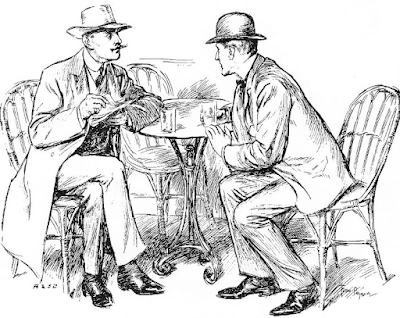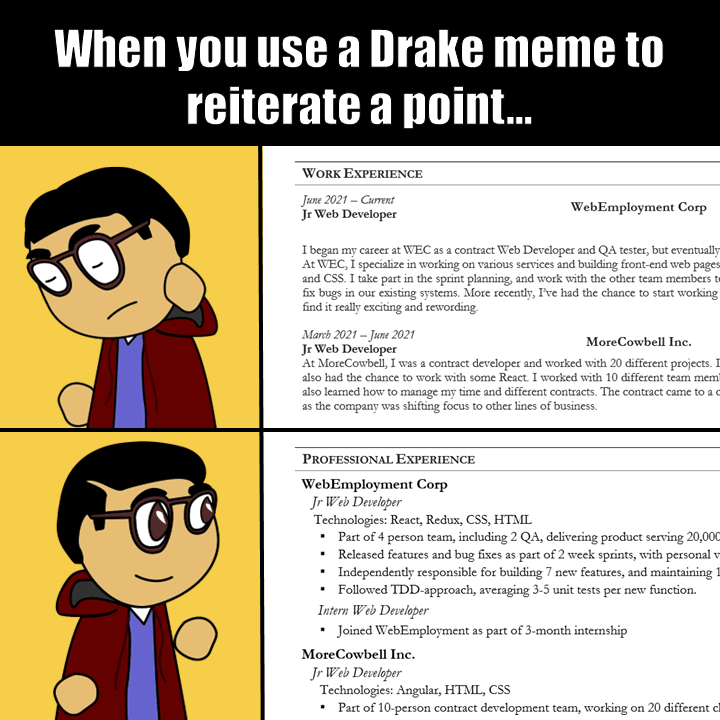Stop Interviewing, Start Conversing.
Interviewing is a challenge. That’s obvious when you’re a candidate - but hiring a suitable candidate is not an easy task either.
Years of interviewing hundreds of candidates for various roles — software engineering, business analysis, sales, marketing, technical support, administrative roles — has lead me to believe the traditional Q&A interview approach is dated and inadequate. I’ve stopped interviewing altogether. Now, I build relationships.
In no other aspect of life do we ask an individual a series of direct questions to make a determination about them, what role they will play, their aptitudes, or skills. We don’t give prospective friends psychological tests, we don’t ask them to list examples in recent history where they were good friends, or if they know how to execute basic friendship requirements. We may ask romantic interests where they see themselves in 5 years, but we are far more invested in how we fit into their plan. Conversely, we expect candidates to align with ours.
Rather than a Q&A format, I like to have a conversation. A less formal approach puts candidates at ease, whether it’s their first professional job or their 15th — giving them the chance to put their best foot forward. The benefit for me is it gives me better insight into the person.
Recently, I volunteered at a local school to “interview” forty 5th graders as part of their job fair. There was a script of standard interview questions for ranking the students. The questions, while important, were not giving me much insight into the students. Canned questions received canned responses. I could no better assess a 5th grader giving me a rehearsed response than I could an adult. Immediately I decided to be conversational and put them at ease.
In fairness to the exercise, I still made sure to ask the questions but only after letting them properly introduce themselves. I’d kick things off by bluntly stating: “I have some questions to go over, but first — I want to know more about you. What do you do for fun?” The moment they mentioned a shared interest, I’d interject just like you would a friend.
Each question had to be ranked 1–10, but most importantly was the area left for additional comments — the section we often ignore because it requires the most effort. I made sure to fill it with honest thoughts about each student, things I wouldn’t have learned were it not for the conversation: One student turned out to be a great problem solver when we were talking about a broken toaster. Another showed me his leadership style when he told me about his two younger brothers and how he keeps then out of trouble. One student told me about his baseball team. While he doesn’t like the limelight of leadership, he is an incredible champion for his team mates and rallies them. In their championship game, he wouldn’t let them give up when they were down five goals. He brushed off with modesty that he scored the first two goals that closed the gap, but beamed with pride when he said how it recharged the team and they went on to win the game.
Adults, of course, are more readily willing to offer up anecdotes of their own success. In this case a conversation does even more to prevent an entirely rehearsed response. Conversations make us vulnerable. While they allow candidates to highlight strengths, conversations also shine a light on weaknesses. Done right, a conversation allows a candidate to comfortably elaborate on their weaknesses without feeling defensive. Questions assessing skills and experience are still fair game, even the occasional curve ball — provided you take care in the approach. I may still ask a Software Engineer candidate to code on a white board, but it’s a collaboration. Unless you’re trying to create a hostile team dynamic that crumbles under pressure, there’s no value in putting someone on the spot. I’m looking to see what that person can (or cannot) achieve with the team’s support.
To illustrate, there’s the now famous “Sell me this pen,” example from The Wolf of Wall Street. On its own this request creates an imbalance and increases the stakes of the interview. Candidates may feel they’re being strung along, that the interviewers are enjoying watching them suffer. It can be toxic and damage reputations. However, when done right, it immediately builds trust and rapport. A conversational approach could be (what follows is meant as a conversation, not a series of rapid-fire questions) “Have you ever seen The Wolf of Wall Street? Do sales people like that movie as much as they do Glengarry Glen Ross? Remember Leo asking people to sell him a pen? Has anyone ever asked you that? How’d it go? Is that a good way to see if someone can sell? Do you think there’s a single right answer? What if he just responded that he never used a pen?”
A traditional interview is an attempt at using a structured approach to hiring. It’s inspired by science: Ask the same standard question of a group of candidates and rank them. However, whereas the scientific method had you make slight adjustments to a single variable and hold everything else constant, you can’t do this with a pool of candidates with a lifetime of subjective experiences. With a conversational approach, you’ll be scoring less on the same set of questions, but you will have a more accurate picture of each candidate as they stand as individuals. It takes more time, but you’ll have more confidence in your selection.
When you take the approach of conversing, every interview becomes about relationship building, and network building. It builds a positive relationship with the candidate and positions you to provide valuable feedback if you don’t hire them, leaving the door open to future possibilities.
In the end it’s about respect, which is important to any relationship and produces much stronger teams.





